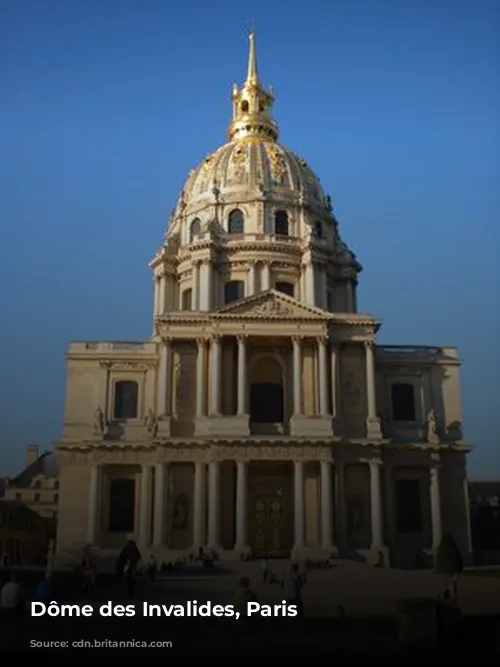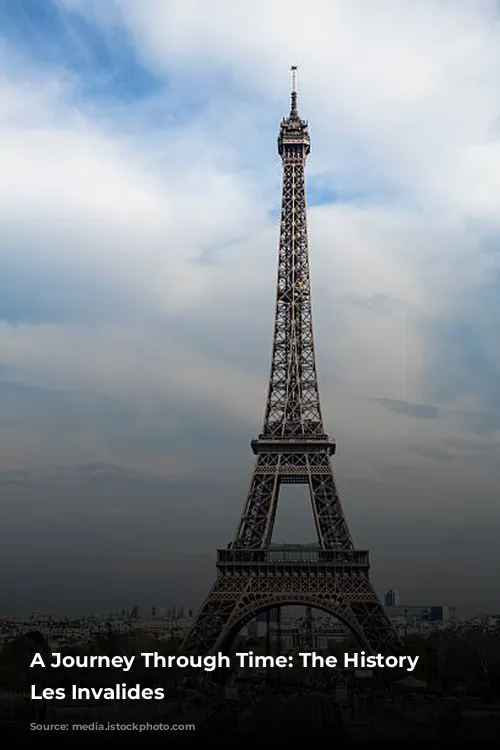Les Invalides, a majestic complex in the heart of Paris, holds centuries of history within its walls. More than just a monument, it tells the story of France’s military might, its artistic prowess, and its reverence for its heroes.
From Barracks to Battlefield Honors
Les Invalides was born from the vision of King Louis XIV, who sought to honor the brave soldiers who fought in his numerous wars. This grand complex was intended to be a sanctuary for disabled veterans, providing them with care and shelter. The project began in 1671 under the direction of architect Libéral Bruant, who dedicated five years to building the barracks and living quarters. However, the design of the church proved to be a challenge.
The architect Pierre Fontaine suggested a unique solution – draping the nave with enemy banners, a testament to French victories. This transformed the soldiers’ chapel (Église des Soldats) into a captivating display of military might. Jules Hardouin-Mansart, renowned for his work on the Palace of Versailles, was then tasked with designing the royal chapel, known as the Dome Church (Église du Dôme). The dome, glittering with gold leaf, stands as a symbol of French grandeur. The interior, adorned with a stunning fresco by Charles de La Fosse, depicts Louis IX, a revered soldier-king, presenting his sword to Christ. The two chapels were seamlessly linked by an oval sanctuary, creating a unique and awe-inspiring religious space dedicated to France’s military legacy.

A Final Resting Place for French Heroes
The French Revolution forever changed the landscape of Les Invalides. The revolutionaries used weapons and cannons seized from Les Invalides during their attack on the Bastille. During the 19th century, the floor of the Dome Church was removed, and the crypt was transformed into the final resting place of Napoleon I. The tomb, with its striking red porphyry sarcophagus and multiple coffins, is a masterpiece of Italian-born architect Louis-Tullius-Joachim Visconti. It took over 40 years after Napoleon’s death to complete this monument, a testament to the enduring admiration for the French emperor. Other notable figures rest within the Dome Church, including Napoleon’s son, Napoleon II, his brothers Joseph and Jérôme Bonaparte, and many revered marshals and generals. The soldiers’ chapel crypt, known as the Cave of Governors (Caveau des Gouverneurs), houses the remains of distinguished individuals such as Claude-Joseph Rouget de Lisle, the composer of the French national anthem, “La Marseillaise.”

A Legacy of Art and History
Les Invalides transcends its role as a military complex. It also houses the Army Museum (Musée de l’Armée), an impressive collection showcasing France’s military history from its earliest days to the end of World War II. Visitors can marvel at a vast array of arms, armor, paintings, and decorations, each piece whispering stories of battles won and lost. The complex also boasts two smaller museums: the Museum of the Order of the Liberation (Musée de l’Ordre de la Libération), dedicated to France’s heroes of World War II, and the Musée des Plans-Reliefs, a collection of detailed relief models, primarily of fortified cities, created as visual aids for military commanders during the 17th and 19th centuries.
A Living Legacy
Even today, Les Invalides remains a vital part of French life. A military hospital continues to provide care for injured soldiers, and the military governor of Paris maintains their headquarters within its walls. The soldiers’ chapel, now known as the Cathédrale St.-Louis des Invalides, remains a vibrant place of worship for the Roman Catholic community.
Les Invalides stands as a testament to the enduring legacy of French history, a place where the past is preserved, and the present is celebrated. It is a treasure trove of art, military prowess, and faith, attracting visitors from around the globe who seek to witness the grandeur and spirit of a nation etched in stone and memory.





